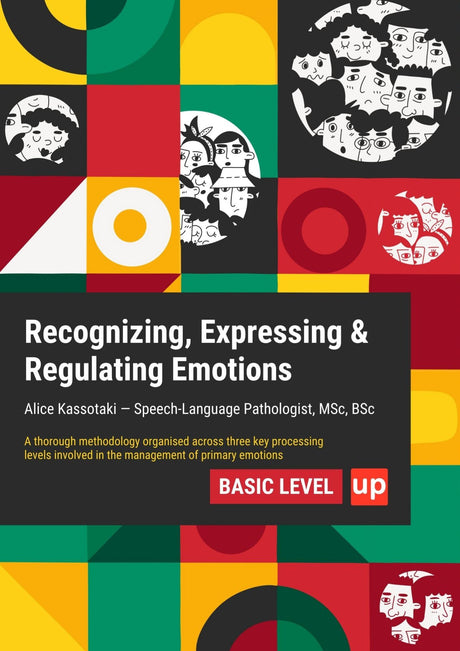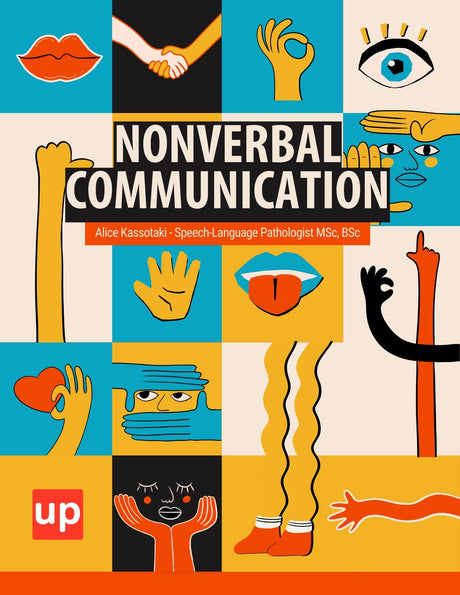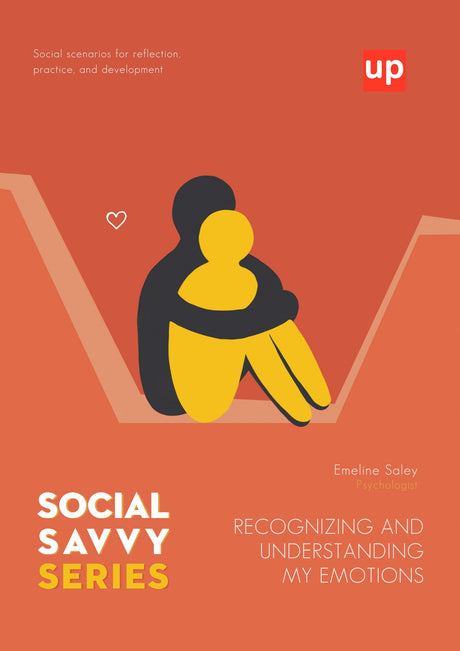Do you ever feel like time is slipping through your fingers, or do you find yourself frequently reminiscing about the "good old days"? Perhaps you're a meticulous planner, your focus always fixed on the horizon of tomorrow. This internal pull towards the past, present, or future isn't random; it's a fundamental aspect of your psychology known as temporal orientation. It's the cognitive lens through which you view, interpret, and interact with the world. With a surprising 15% of Gen Z preferring to think about the past over the future, understanding this internal clock is more relevant than ever. This article will explore your unique relationship with time, breaking down the three core orientations and revealing how they silently shape your decisions, well-being, and success.
Key Points
- Temporal orientation is a fundamental psychological construct that reflects your default focus on the past, present, or future, shaping how you perceive and interact with the world.
- Measuring temporal orientation can be done through self-report questionnaires like the Zimbardo Time Perspective Inventory and increasingly through language-based assessments using natural language processing and machine learning.
- Cultivating a balanced and flexible temporal perspective enhances mental health, decision-making, and relationships by allowing you to adapt your focus according to the demands of different situations.
What Exactly is Temporal Orientation? Defining Your Internal Clock

Temporal orientation is your mind’s default setting for time. It’s the non-conscious tendency to prioritize one temporal frame—past, present, or future—over the others when thinking, feeling, and acting. This orientation influences everything from your daily mood to your most significant life choices. Closely related is the concept of time perspectives, a psychological construct that reflects how individuals view and relate to different points in time—past, present, and future.
A Core Psychological Concept
At its heart, temporal orientation is a central component of the psychology of time. It’s a cognitive structure that helps us organize our experiences, creating a coherent narrative of our lives by comparing events in relationship to when they occur. Researchers study this concept through various means, with findings often published in academic reports and proceedings, highlighting its impact on motivation, emotion, and stress-coping processes. It’s not about how well you can tell time, but rather where your thoughts tend to live on the timeline of your life.
More Than Just a Trait: A Spectrum of Focus
It’s crucial to understand that temporal orientation isn’t a rigid category you’re locked into. Instead, think of it as a spectrum. While you might have a dominant orientation, you can and do shift your focus depending on the context. You might be future-focused when working on a major project but shift to a present orientation while enjoying a vacation. The key is the default tendency—the temporal “home base” your mind returns to most often. As you move between these orientations, you are constantly putting time into perspective, adjusting how you relate to past, present, and future based on your current situation.
The Three Pillars of Temporal Orientation: Past, Present, and Future
Our relationship with time is built upon three distinct pillars. These are often referred to as the primary temporal orientation dimensions—past, present, and future—which shape our experience of life. Each has unique strengths and potential drawbacks that color our experience of life.
Past Temporal Orientation: The Anchor of Memory
A past temporal orientation means your thoughts are frequently anchored in what has already happened. This can manifest positively as nostalgia, learning from experience, and maintaining traditions. People with a strong past orientation often have a rich sense of personal history and identity. However, an overemphasis on the past can lead to rumination, regret, and an inability to move forward. Research shows that more frequent thoughts about the past are associated with greater depressive symptoms and anxiety. In the world of marketing, this tendency is powerful; studies show 75% of consumers are more likely to buy when ads evoke nostalgia.
Present Temporal Orientation: Living in the Now
Those with a present temporal orientation are focused on the here and now. They live in the moment, seeking immediate pleasure, excitement, and sensation. This mindset is associated with mindfulness, spontaneity, and the ability to fully experience life as it happens. The downside can be impulsivity, risky behavior, and a failure to consider the future consequences of one's actions. With global stress levels on the rise—approximately 40% of adults report high stress—the ability to ground oneself in the present can be a valuable coping mechanism.
Future Orientation: The Compass for Tomorrow
A future orientation involves prioritizing long-term goals and planning for what is to come. In psychological and social science research, this is often referred to as 'future time orientation,' a key individual difference factor linked to goal setting, health behaviors, and emotional states. Individuals with this focus are often ambitious, conscientious, and willing to delay gratification for a greater reward later. This is the engine of achievement, driving personal and professional growth. However, an extreme future orientation can lead to chronic anxiety, an inability to enjoy present successes, and a feeling of constantly chasing the next milestone. A study published by the PMC found that perceiving the future as limited was strongly associated with higher depression, anxiety, and stress levels, highlighting the importance of a hopeful future perspective.
Measuring Temporal Orientation: Tools and Approaches

Understanding and measuring temporal orientation is essential for researchers and practitioners who want to predict behavior, enhance organizational performance, and support academic goal setting. By identifying whether someone is more focused on the past, present, or future, we gain valuable insights into their decision-making processes, motivation, and even their approach to strategic planning.
One of the most widely used tools for measuring temporal orientation is the self-report questionnaire. The Zimbardo Time Perspective Inventory (ZTPI) is a prime example, offering a reliable individual differences metric that assesses the relative emphasis people place on past, present, and future time frames. Participants respond to statements about their attitudes and behaviors, allowing researchers to map out their unique time perspective profile. This approach has been instrumental in studies of academic goal achievement, organizational behavior, and life satisfaction.
In recent years, language-based assessments have emerged as a powerful complement to traditional questionnaires. By analyzing the words people use in written texts, emails, or even social media posts, researchers can extract human temporal orientation and detect subtle cues about whether someone is past, present, or future oriented. These methods leverage advances in natural language processing and computational linguistics, making it possible to assess temporal focus at scale and in real-world contexts.
Both self-report and language-based approaches offer valuable perspectives on human temporal orientation. Whether used for academic goal setting, strategic planning, or understanding organizational behavior, these tools help illuminate the ways our internal clocks shape our actions and relationships throughout life.
The Ripple Effect: How Your Temporal Orientation Shapes Your Life
Your dominant temporal perspective sends ripples across every area of your life, influencing behavior and outcomes in profound ways. Temporal orientation is an important aspect of human psychology that influences a wide range of behaviors and outcomes.
Understanding the relation between temporal orientation and life outcomes is crucial for recognizing how our perspective on time shapes various domains of our lives.
Impact on Decision-Making and Goal Achievement
Your temporal focus is a primary driver of your decisions. A present-oriented individual might choose an immediate, smaller reward over a larger, delayed one. Conversely, someone with a strong future orientation will likely make sacrifices now—like saving money or studying—to achieve long-term goals. This directly impacts goal attainment, as consistent, future-focused actions are often required for significant accomplishments. Future oriented people are more likely to achieve these accomplishments because their emphasis on planning and delayed gratification helps them stay committed to their long-term objectives.
Well-being and Mental Health
The link between temporal perspective and mental health is well-documented. An excessive focus on past negative events can fuel depression, while constant worry about the future can escalate stress and anxiety. The way we frame time can also serve as a buffer. For instance, after adverse life events, a future orientation can instill hope and motivate recovery, whereas a past orientation might lead to getting stuck in the trauma. Emotional intensity and other psychological factors may have mediating properties that influence how temporal orientation impacts mental health outcomes.
Relationships and Communication
Mismatched temporal orientations can be a source of friction in relationships. A future-oriented partner planning a vacation months in advance might feel frustrated by a present-oriented partner who prefers spontaneity. Understanding these differences can foster empathy and better communication, allowing partners to appreciate each other’s perspectives before and after making plans together. Individual differences such as gender can also influence temporal orientation and relationship dynamics.
Health and Lifestyle Choices
Health behaviors are strongly linked to our temporal focus. A future orientation encourages preventative care, regular exercise, and healthy eating because these actions are investments in our “future self.” A present-oriented person, on the other hand, may be more tempted by immediate gratification, such as unhealthy foods or skipping a workout, without fully weighing the long-term health consequences. Age is another factor that can influence whether individuals adopt a future or present orientation in their health choices.
Career and Financial Planning
In the professional realm, a strong future orientation is a significant asset. It underpins effective strategic planning, enabling individuals and organizations to set long-term objectives and work methodically towards them. Emphasizing long term orientation is crucial, as it allows for prioritizing future planning and sustained effort, reflecting how cultural values and outlooks can shape approaches to career advancement, retirement planning, and building wealth. This perspective is essential for these endeavors, as they require consistent effort over time with a clear vision of a future state.
Discovering Your Own Temporal Blueprint: A Self-Reflection Guide

Understanding your dominant temporal orientation is the first step toward harnessing its power. While formal psychological assessments exist, you can gain significant insight through self-reflection. Previous studies have often relied on self-report scales to measure temporal orientation, but these methods may not fully capture behaviorally accurate patterns, highlighting the need for new approaches.
Beyond Formal Assessments: Everyday Clues
Pay attention to your daily thoughts and conversations. Do you often start sentences with “I remember when…” or “I can’t wait until…”? Is your calendar packed with future commitments, or do you prefer to leave your days open? These everyday habits are powerful clues to your underlying temporal blueprint. Analysis of Facebook language has also been used in research to uncover patterns of temporal orientation in everyday communication.
Reflective Questions to Uncover Your Leanings
Ask yourself a few key questions:
- When I daydream, do my thoughts drift to past memories or future possibilities?
- Do I prioritize immediate enjoyment or long-term rewards?
- When facing a problem, do I draw on past experience, focus on the immediate solution, or plan for future prevention?
- How do I feel about deadlines—are they motivating sources of pressure or stressful constraints?
While self report questionnaires are commonly used to assess temporal orientation, self-reflection through these questions can provide additional personal insight.
Observing Your Habits and Decisions
Look at your recent choices in finances, health, and leisure. Do they reflect a pattern of prioritizing today’s comfort or tomorrow’s security? Your checkbook, your diet, and your weekend plans are all reports on your temporal orientation in action.
Research has found that temporal orientation is linked to the big five personality traits, which can influence patterns in decision-making and habits.
The Influence of Culture (Briefly)
It’s important to recognize that your temporal blueprint is also shaped by your cultural background. Studies show significant cultural variation in time perception. Cultural differences in temporal orientation are especially evident when comparing North American and East Asian societies, where large-scale social media analyses reveal distinct patterns in how individuals focus on the past, present, or future. For example, research on how European American and Vietnamese American adolescents cope with adverse life events suggests that cultural norms can influence whether an individual leans on past identity or future hope during times of stress. The North American chapter of several academic organizations actively studies these cultural aspects of temporal orientation, fostering regional collaboration and research.
Mastering Your Time Perspective: Cultivating Balance and Flexibility
The ultimate goal isn’t to force yourself into one orientation but to cultivate a balanced and flexible temporal perspective. However, individuals may face challenges when trying to shift their temporal orientation, such as overcoming ingrained habits or adapting to new ways of thinking.
The Ideal: A Balanced Time Perspective
The most adaptive approach is the ability to shift your temporal lens to fit the situation. A balanced time perspective allows you to learn from the past without being trapped by it, enjoy the present without being reckless, and plan for the future without being anxious. Research confirms that this balance is associated with better mental health outcomes, including greater life satisfaction. The current model of time perspective balance is supported by research linking it to positive mental health outcomes.
Strategies for Shifting Your Focus
- To Connect with the Present: Practice mindfulness meditation, engage your senses in a simple activity like drinking tea, or turn off distractions and focus on a single task.
- To Engage with the Future: Set clear, actionable goals. Create a vision board. Write a letter to your future self, outlining your hopes and plans.
- To Learn from the Past: Schedule time for positive reminiscence. Journal about past experiences to extract lessons and appreciate how far you’ve come.
It is important to note that evaluating the effectiveness of interventions designed to shift temporal orientation involves methodological challenges, especially when comparing results across different populations and cultural contexts.
Adapting Your Temporal Lens
Recognize when a specific orientation is needed. Use future orientation for strategic planning at work. Shift to a present focus when spending time with loved ones. Access your past orientation to recall a solution that worked before. This conscious adaptation is the hallmark of a masterful relationship with time. Considering contextual information helps determine which temporal orientation is most appropriate in any given situation.
Conclusion: Your Dynamic Relationship with Time
Your temporal orientation is more than a psychological curiosity; it is the operating system that runs in the background of your life, guiding your path through the landscape of time. It’s not a fixed destiny but a dynamic relationship—one you can understand, influence, and balance. By recognizing whether you are anchored to the past, living for the now, or reaching for the future, you gain profound self-awareness. Use this knowledge to cultivate a flexible temporal perspective, allowing you to draw wisdom from your past, find joy in your present, and build the future you desire with intention and purpose.
Frequently Asked Questions (FAQ)
What is temporal orientation?
Temporal orientation is the cognitive tendency to focus on the past, present, or future when thinking, feeling, and making decisions. It shapes how individuals perceive and interact with time in their daily lives.
How is temporal orientation measured?
Traditionally, temporal orientation is measured using self-report questionnaires like the Zimbardo Time Perspective Inventory (ZTPI). Recently, language-based assessments using natural language processing and machine learning have been developed to analyze written texts and social media data for temporal focus.
Can a person have more than one temporal orientation?
Yes, temporal orientation exists on a spectrum. While individuals may have a dominant orientation (past, present, or future), they can shift their focus depending on context and situation.
How does temporal orientation affect mental health?
An excessive focus on the past can lead to rumination and depression, while an extreme future orientation may cause anxiety and stress. Balanced temporal perspectives are linked to better mental health and well-being.
Does culture influence temporal orientation?
Yes, cultural background plays a significant role in shaping temporal orientation. For example, East Asian cultures tend to have a stronger past orientation, while North American cultures often emphasize future orientation. Social media language studies support these cultural differences.
How can I change or balance my temporal orientation?
Practices such as mindfulness can help engage the present, goal-setting can foster future orientation, and reflective journaling can connect you with the past. Cultivating flexibility in temporal focus is associated with improved decision-making and well-being.
What are the practical applications of understanding temporal orientation?
Knowledge of temporal orientation can improve strategic planning, academic goal setting, organizational behavior, relationships, and health behaviors by tailoring approaches to individual time perspectives.
What role does natural language processing play in studying temporal orientation?
Natural language processing (NLP) allows researchers to analyze large volumes of text, such as social media posts, to detect cues of temporal orientation at scale, providing an alternative to traditional questionnaires.
Are there challenges in measuring temporal orientation?
Yes, methodological challenges include reliance on self-report measures, cultural translation issues, and capturing the dynamic nature of temporal focus. Advances in computational linguistics and data mining help address some of these challenges.
Where can I learn more about temporal orientation research?
Academic journals in psychology, social science, and applied psychology, as well as conferences on human language technologies and computational linguistics, provide ongoing research updates. Open access content and current studies also offer valuable insights.
Original content from the Upbility writing team. Reproducing this article, in whole or in part, without credit to the publisher is prohibited.
References
-
Zimbardo, P. G., & Boyd, J. N. (1999). Putting time in perspective: A valid, reliable individual-differences metric. Journal of Personality and Social Psychology, 77(6), 1271–1288.
-
Park, G., Schwartz, H. A., Eichstaedt, J. C., Kern, M. L., Kosinski, M., Stillwell, D. J., ... & Seligman, M. E. (2017). Living in the past, present, and future: Measuring temporal orientation with language. Journal of Personality, 85(2), 270–280.
-
Kamila, S., Hasanuzzaman, M., Ekbal, A., & Bhattacharyya, P. (2022). Investigating the impact of emotion on temporal orientation in a deep multitask setting. Scientific Reports, 12, 493. https://doi.org/10.1038/s41598-021-04331-3
-
Zax, A. (2024). Temporal orientation and the association between adverse life events and internalizing symptoms in Vietnamese American and European American adolescents. Child Psychiatry & Human Development.
-
Barreto, T. S., Lanivich, S. E., & Cox, K. C. (2022). Temporal orientation as a robust predictor of innovation. Journal of Business Research, 138, 287–300. https://doi.org/10.1016/j.jbusres.2021.09.003
-
Hou, X. D., Guntuku, S. C., Cho, Y.-M., Sherman, G., Zhang, T., Li, M., ... & Ungar, L. H. (2024). A cross-cultural examination of temporal orientation through everyday language on social media. PLoS ONE, 19(3), e0292963. https://doi.org/10.1371/journal.pone.0292963
-
Zimbardo, P. G., & Boyd, J. N. (2008). The time paradox: The new psychology of time that will change your life. Free Press.
-
Hasanuzzaman, M., Kamila, S., Kaur, M., Saha, S., & Ekbal, A. (2017). Temporal orientation of tweets for predicting income of users. In Proceedings of the 55th Annual Meeting of the Association for Computational Linguistics (Vol. 2, pp. 659–665).









